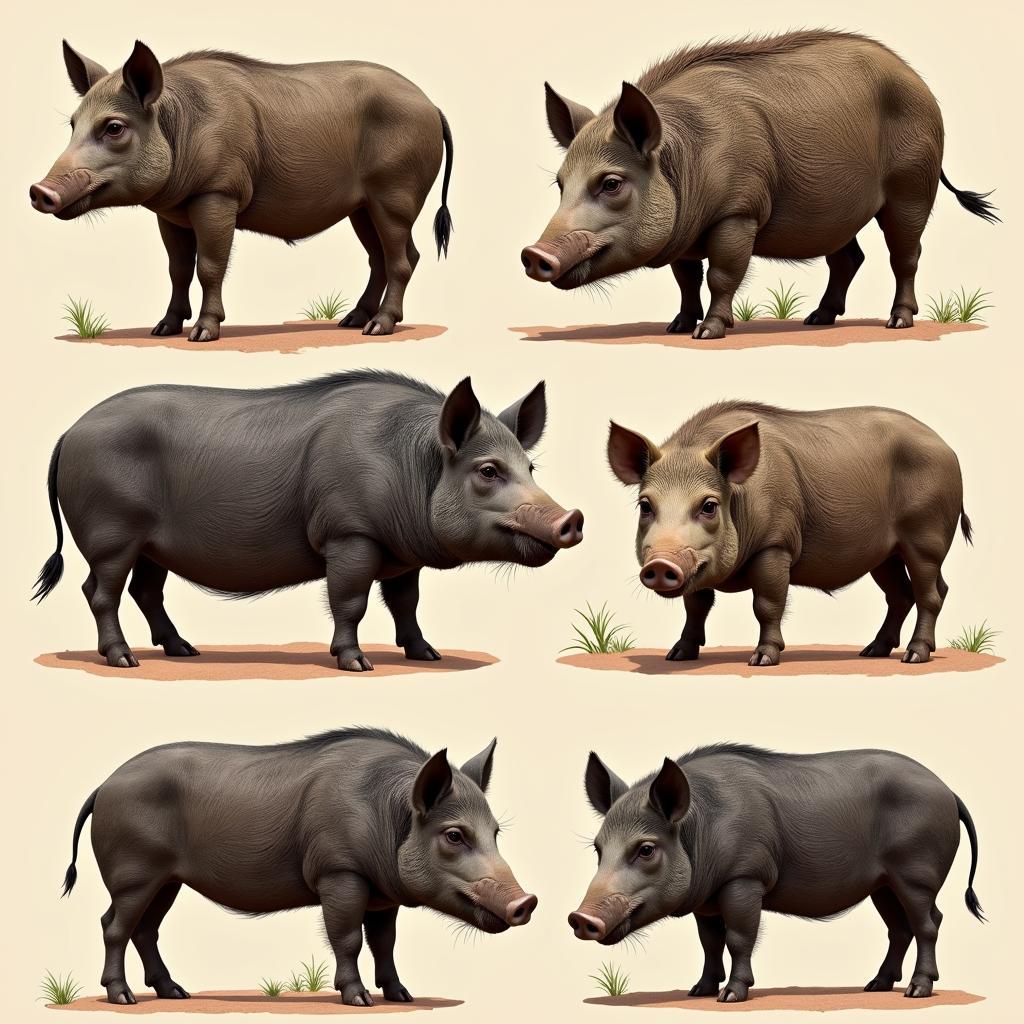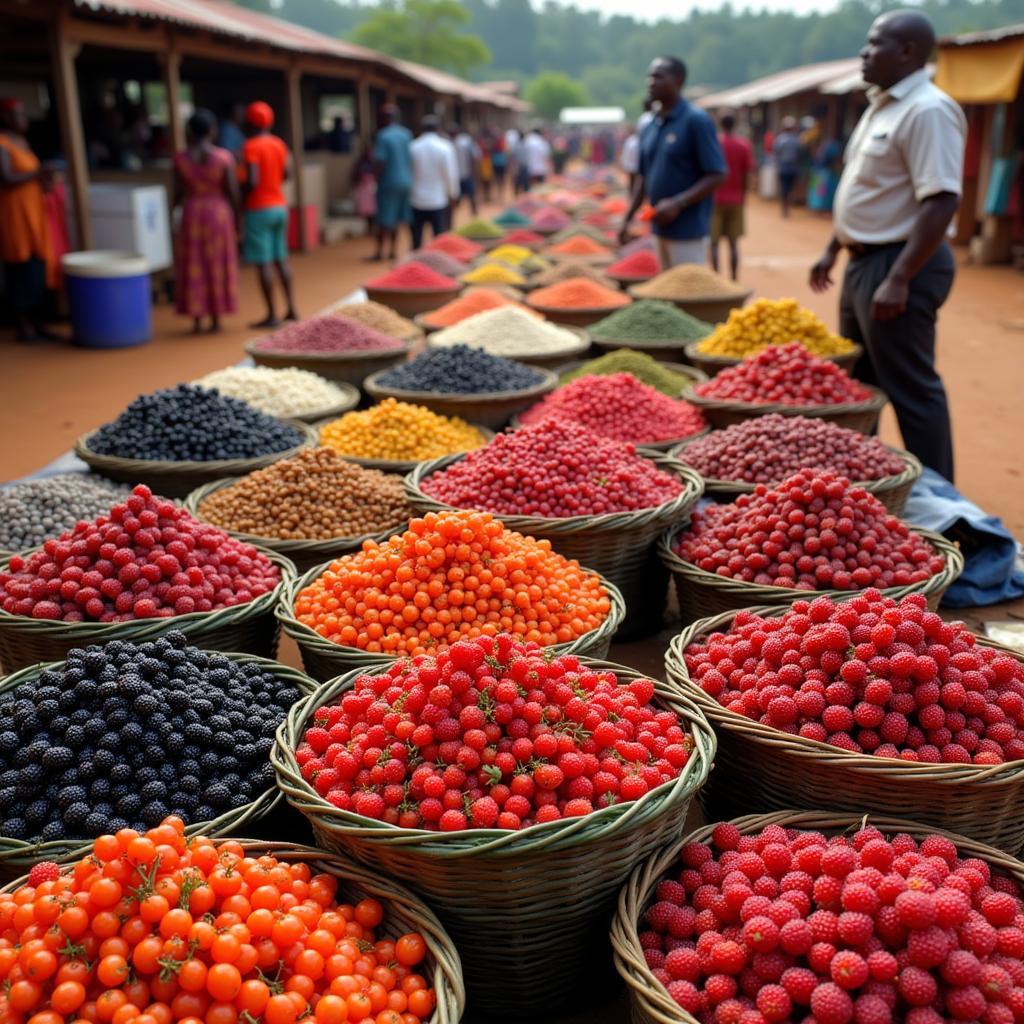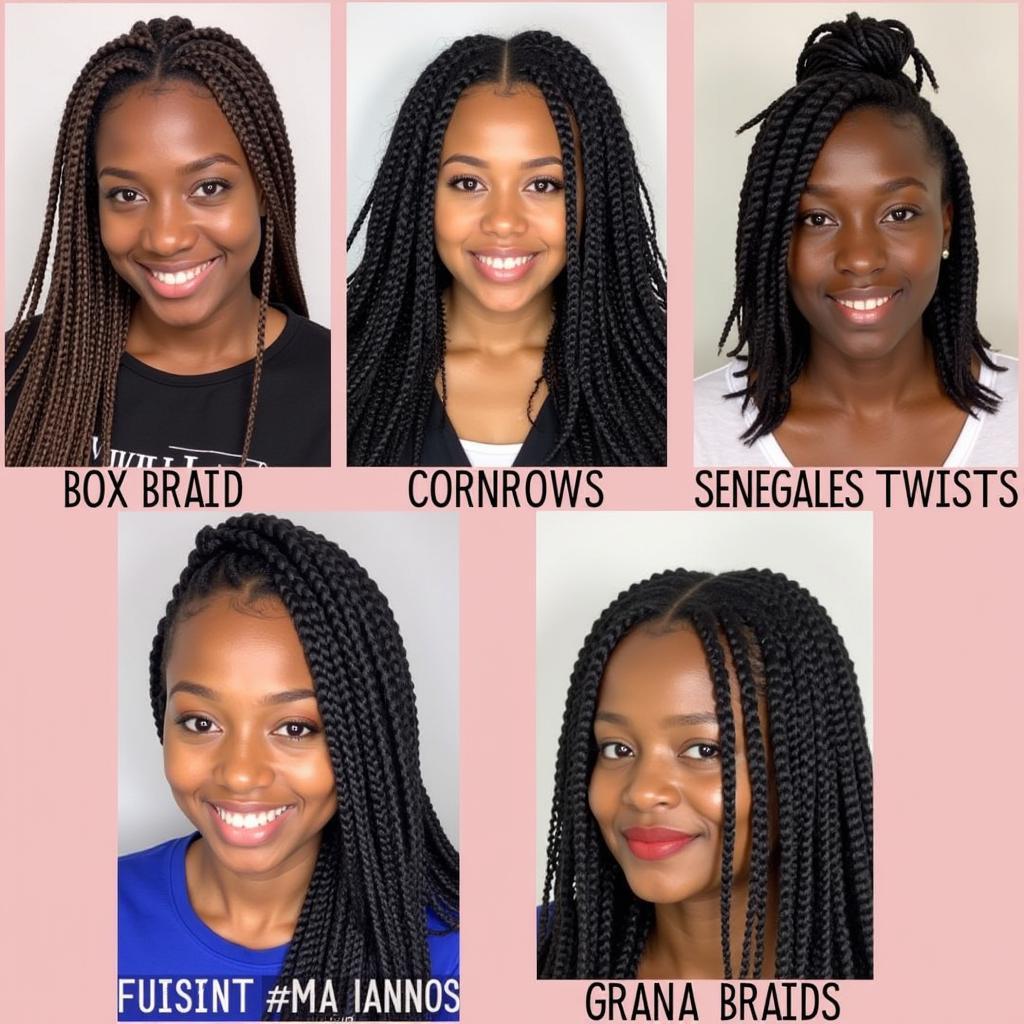Exploring the Diverse World of African Chordophones
African Chordophones represent a captivating tapestry of musical instruments that have shaped the continent’s cultural identity for centuries. These stringed instruments, ranging from the iconic kora to the lesser-known xalam, produce enchanting melodies and rhythmic complexities that have enthralled generations.
Unraveling the Chordophone Family
Chordophones, simply put, are instruments that produce sound through the vibration of stretched strings. Across Africa, these instruments manifest in a stunning variety of shapes, sizes, and playing styles. What unites them is their ability to evoke the heart of African storytelling, celebration, and spiritual expression.
Harp-Lutes: The Soul of West Africa
West Africa is particularly renowned for its harp-lutes, instruments that combine features of both harps and lutes. Among these, the kora reigns supreme.
With its gourd resonator covered in cowhide and 21 strings, the kora produces a mesmerizing sound, often described as both delicate and powerful. This instrument holds a revered place in West African society, traditionally played by jali, or griots, who are hereditary musicians and storytellers. The kora’s enchanting melodies carry tales of ancient lineages, historical events, and societal values.
Musical Bows: Simplicity and Significance
Beyond the elaborate construction of the kora, Africa also boasts a rich tradition of musical bows, some of the simplest yet most versatile chordophones. These instruments, often crafted from a single piece of wood and a string, resonate with the very essence of resourcefulness and musicality.
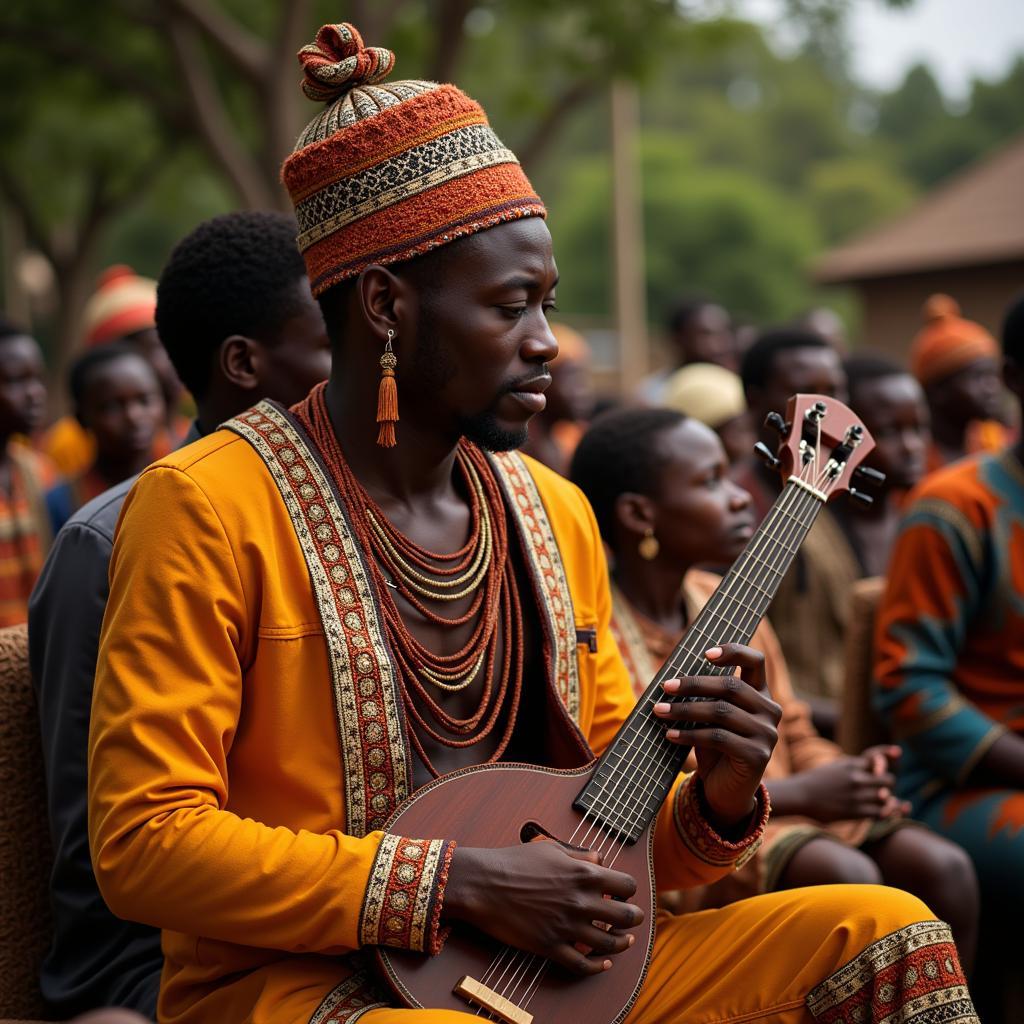 Ngombi player in Gabon
Ngombi player in Gabon
In Central Africa, the ngombi serves as a powerful tool for communication with the spirit world. Played with a plectrum and often featuring a resonator made from a gourd or tortoise shell, the ngombi’s deep, resonant tones create an ethereal ambiance during rituals and ceremonies. This exemplifies how African chordophones transcend mere entertainment to embody profound cultural and spiritual significance.
Beyond the Kora and Ngombi: A Continent of Strings
While the kora and ngombi offer a glimpse into the diversity of African chordophones, countless other instruments grace the continent. In Ethiopia, the krar, a five or six-stringed lyre, accompanies traditional songs and dances. The xalam, a fretless lute found in Senegal and Gambia, adds rhythmic depth to the musical landscape. East Africa resonates with the sounds of the zeze, a fiddle often played with a bow made from horsehair. Each instrument contributes a unique voice to Africa’s vibrant musical tapestry.
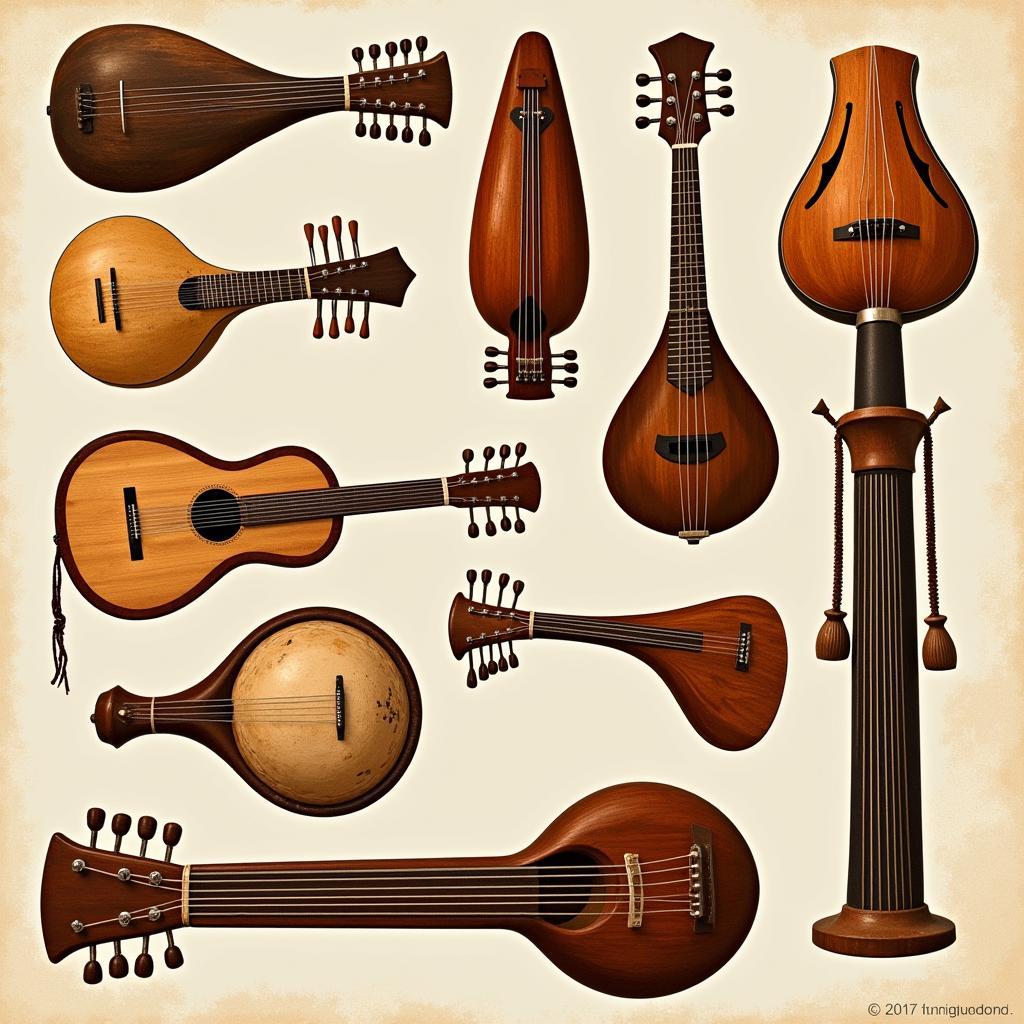 Diverse African chordophones
Diverse African chordophones
“The beauty of African chordophones lies not just in their diverse sounds but also in their ability to connect generations through shared musical traditions,” says Dr. Abena Quansah, an ethnomusicologist specializing in West African music. “These instruments are living embodiments of history, storytelling, and cultural identity.”
African Chordophones: Echoes of a Rich Heritage
From the intricate melodies of the kora to the haunting sounds of the ngombi, African chordophones offer a captivating journey into the heart of the continent’s musical soul. These instruments, shaped by centuries of tradition and innovation, continue to inspire and captivate listeners worldwide. Exploring the world of African chordophones is to embark on a journey of discovery, appreciating not just the music but the rich cultural tapestry it represents.

